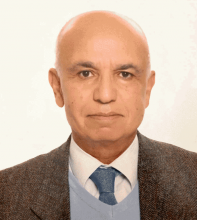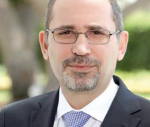You are here
The malady that is duality
May 19,2016 - Last updated at May 19,2016
One problem that still plagues societies, human cultures, ideologies and religions is dualistic thinking.
It is attributed much to of the misunderstanding, prejudice, tension and conflict that we witness in essentially all parts of the world today.
Some societies fare better than others, relatively speaking, but all — developed and underdeveloped alike — are still victims of dualistic thinking.
Dualistic thinking is basically defined as the habit of perceiving people, objects and issues in terms of binary oppositions: two mere components, one good the other bad, one right the other wrong, one superior the other inferior.
Deeply embedded in it is both the sharp contrast between the two elements in question and their pernicious hierarchy.
This applies to a host of “categories” on the basis of which humanbeings and their attributes, thoughts and actions are perceived or judged: race, ethnicity, gender, faith, sect, age, social status, profession, geographical region, ideology, political stance, taste, personal choice, etc.
Much of the sectarian and political strife that is now tearing our region apart, for example, has its basis in dualistic thinking: the notion that one sector, faith, ethnic group, ideology, political stance, etc., is right, and the other is wrong.
Right is to prevail, and wrong is to be suppressed or eliminated. The dangerous thing about duality is that it often negates and demonises, rather than recognise and cherish difference.
Duality has reigned for very long in human civilisation, and it greatly informs most human educational systems, modes of upbringing, media institutions and overall discourse.
It is, in fact, deeply entrenched in nurture and culture.
Particularly disturbing about it are not only its pernicious implications, but also the fact that it is fallacious.
Most often, things cannot be narrowed down to the two simplistic options of correct or incorrect, right or wrong, black or white.
Several positions on the same issue can be right at the same time, and several can be simultaneously incorrect.
In other words, there is a very wide “range” of correctness or incorrectness.
More importantly, several modes of perception or interpretation can exist or coexist outside the narrow duality of pure right or wrong.
Black and white are two mere colours among so many others, and so many shades of others.
What makes our world both beautiful and special are its variety and richness: the human “mosaic” which we always speak of.
What is required for human beings to rid themselves of the malady that is duality is nothing short of deconstructing and eradicating it, replacing it with the more correct and healthy angle from which to look at people, objects and issues, which is plurality.
Difference and diversity are human assets that need to be recognised, espoused and celebrated. The task is difficult only at the start, because we have “learned” or “acquired” so much that is fallacious, and therefore we need to “unlearn” or “unacquire” it first.
Once the process begins, however, the mission will not be particularly difficult, since diversity and plurality are quite natural in human society, unlike duality, which is in fact unnatural or imposed.
Deconstructing and eliminating the so many fallacious dimensions of duality should be a priority for human beings at this point in time, as their very existence and peace are at stake because of it.













